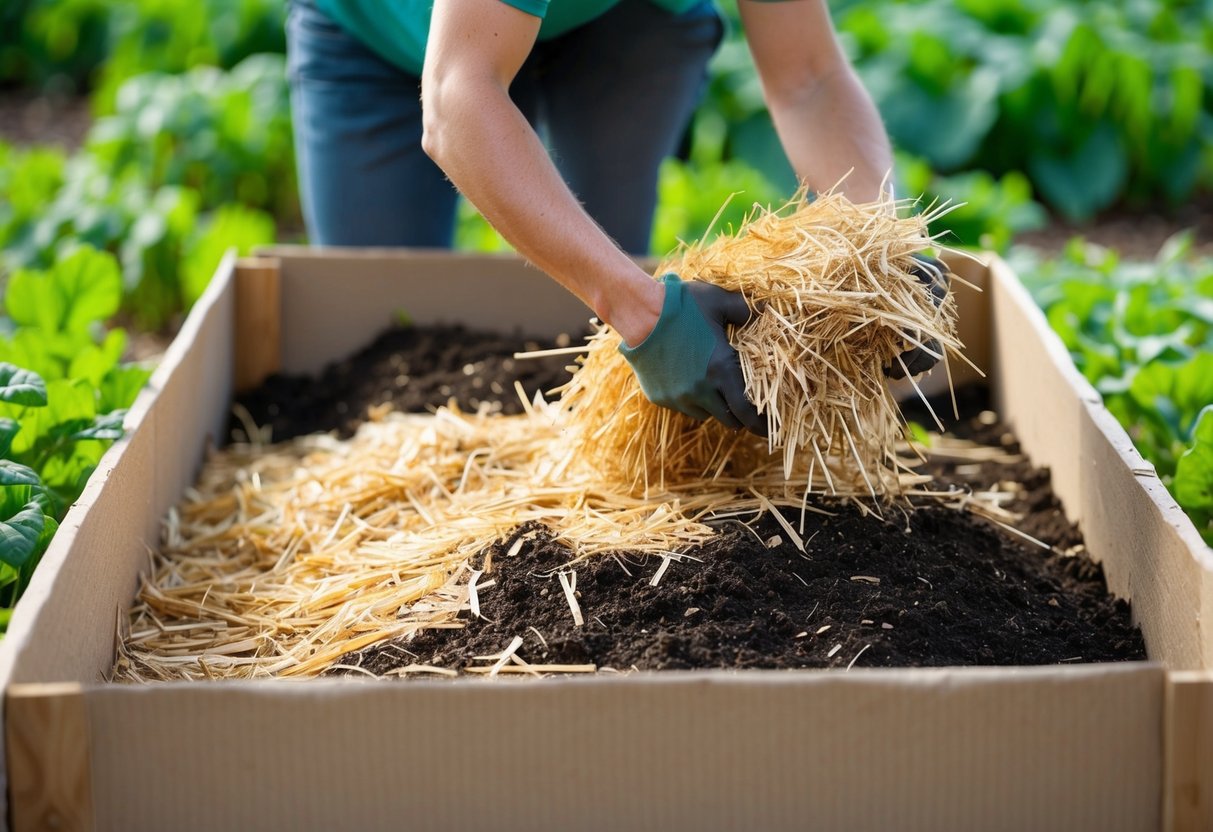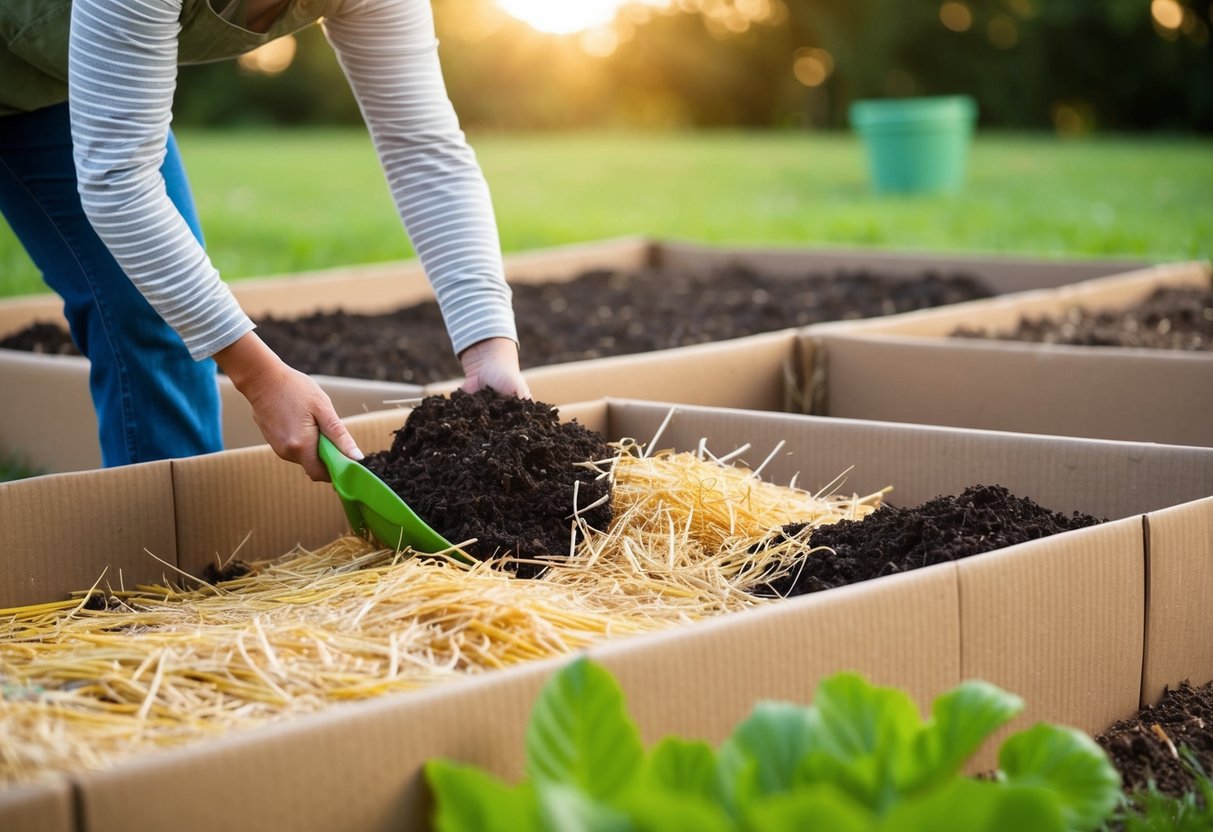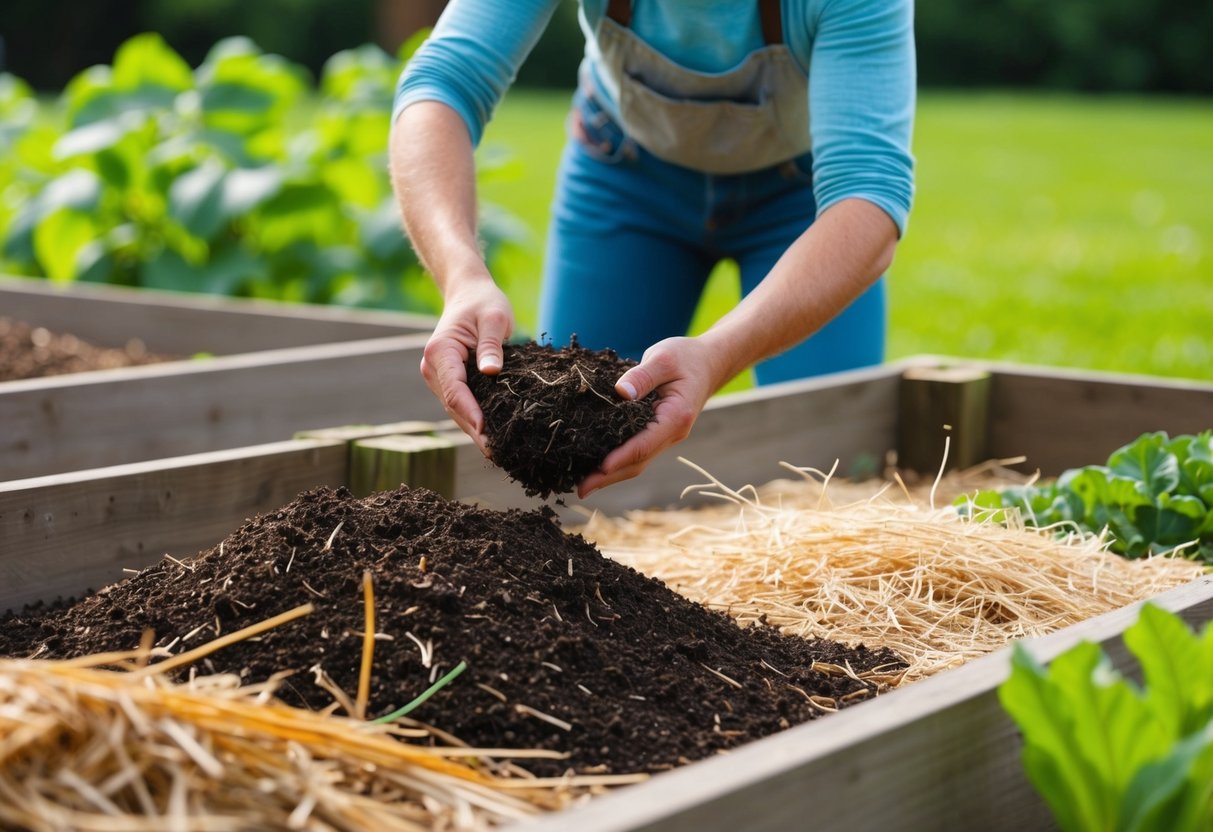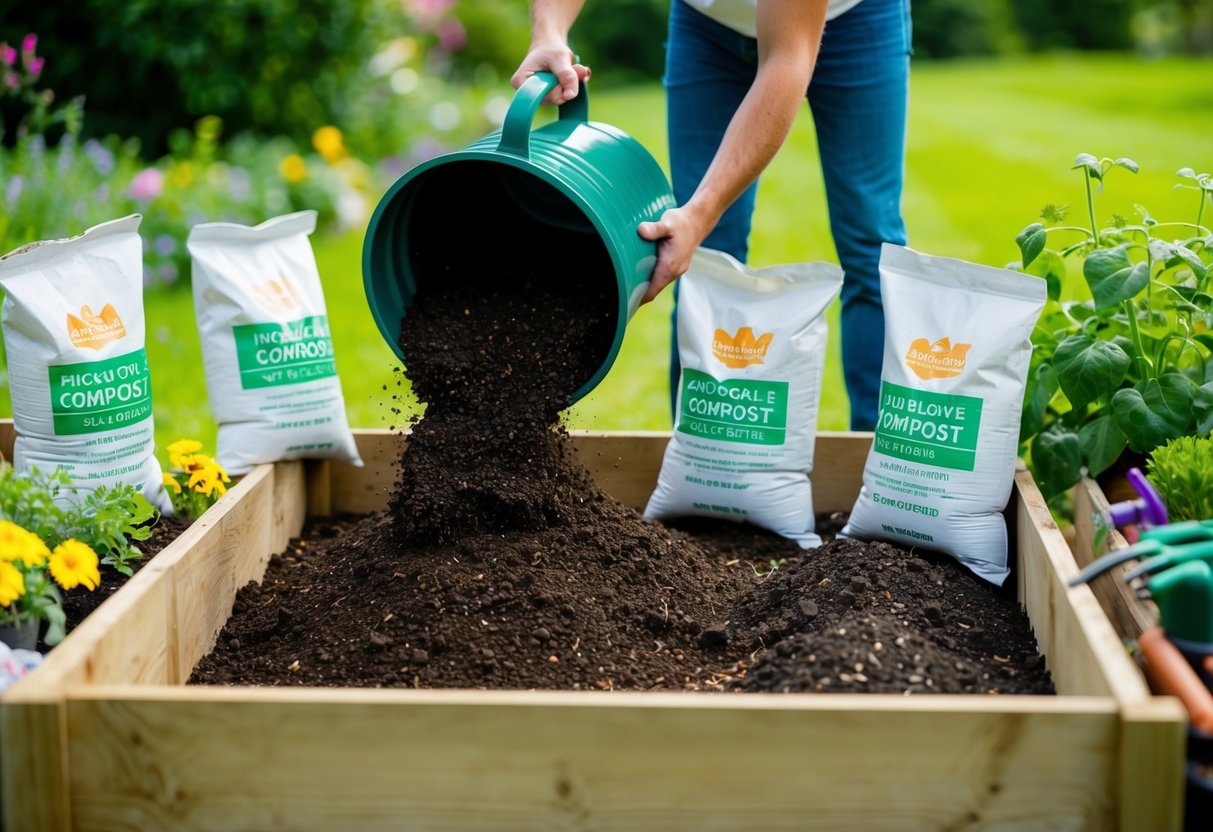How to Fill Raised Beds Cheaply: Budget-Friendly Gardening Tips
Thinking about starting a garden but worried about the cost? Raised garden beds can be the perfect solution. You can fill raised beds cheaply by using compostable materials and buying soil in bulk. This method not only saves money but also promotes healthy soil for your plants.

When planning your garden, consider using items you already have. Things like branches, leaves, and grass clippings can be great fillers. By using these materials, you can support your plants and cut costs on buying new soil.
For the top layer, a mix of topsoil and compost works well. Ensuring your plants have the nutrients they need will help them thrive. Curious about more tips? Keep reading to discover how you can create a beautiful garden without breaking the bank.
Choosing the Right Materials for Your Beds

Creating a raised bed garden doesn’t have to break the bank. You can find cost-effective solutions by using a blend of purchased materials and locally sourced organic items. This approach not only saves money but also ensures healthy plant growth.
Finding Affordable Soil and Amendments
When looking for soil, seek out local garden centers that offer bulk discounts. Consider using a mix of topsoil and compost for fertile ground. The typical ratio is about 75% topsoil and 25% compost. This combination provides essential nutrients without a high price tag.
You might also want to explore options like peat moss and composted manure. These materials improve soil texture and add important nutrients. Try to find them at garden supply stores or community compost facilities. Always consider the benefits of purchasing used potting soil, as it can be a cost-effective solution to fill your beds.
Using Local Organic Materials
Local organic materials are a fantastic way to fill your raised beds cheaply. Items like fallen leaves, grass clippings, and wood chips can be used effectively. They not only aid soil health but also help maintain moisture. These materials are often available for free or at a minimal cost.
You can also make use of homemade compost by collecting kitchen scraps and yard waste. This enriches the soil and reduces waste. If you don’t have compost at home, check if your community garden or local waste management offers compost bins or programs. These simple steps can help you create a lush, thriving garden without spending a fortune.
Layering Techniques for Soil Building

Layering techniques like lasagna gardening and hugelkultur can help you fill your raised beds cost-effectively. Both methods use layers of organic materials to create nutrient-rich soil, reducing the need for expensive soil purchases.
Lasagna Gardening Explained
Lasagna gardening, also known as sheet mulching, builds fertile soil by layering organic materials. You start with a layer of cardboard or newspaper to block weeds. On top of this, alternate between carbon-rich materials like straw or dried leaves and nutrient-rich layers such as kitchen scraps or grass clippings.
Each layer should be around two inches thick.
The composting process begins in-place, breaking down over time to create healthy soil. This method saves money since you can use materials from your garden and kitchen. Plus, it reduces waste by recycling organic materials into compost, which enriches your plants.
Introduction to Hugelkultur
Hugelkultur is a technique that involves building raised beds using wood as a base layer. Start by placing logs or branches at the bottom of your bed. Fill in gaps with smaller sticks, grass clippings, or leaves.
Then, top this with compost or soil.
Over time, the wood decomposes, releasing nutrients and retaining water. This process creates a self-sustaining bed that requires less watering and fertilizing. The decaying wood provides a constant supply of nutrients, while improving soil structure and aeration.
Whether using hugelkultur or lasagna gardening, these techniques offer cost-effective ways to build soil and promote healthy plant growth.
Optimizing Drainage and Moisture

Getting the balance right between drainage and moisture is key for healthy raised beds. You’ll need to think about water drainage to keep your plants happy and thriving. Useful materials like rocks, straw, and wood chips can help achieve this.
Balancing Water Retention with Drainage
For raised beds, balancing water retention and drainage is important. Good drainage allows excess water to flow away, preventing root rot. Adding coarse materials, like rocks, at the bottom can enhance water drainage.
You’ll also want to maintain enough moisture retention for plants to access water as needed. Incorporate organic matter like compost, which holds water well without becoming soggy. Mixing in wood chips or straw can further improve moisture retention while keeping the soil light and airy.
Materials That Improve Aeration
Proper aeration in your raised beds promotes healthy root growth and improves overall plant health. Adding materials that improve aeration is crucial. You might consider using straw or coir, as they are excellent for creating air pockets.
These materials not only prevent soil compaction but also aid in maintaining consistent moisture levels. Wood chips are another great option. They decompose slowly, ensuring aeration and a steady release of nutrients over time. Avoid overly dense materials that hinder airflow and keep your bed’s structure open and breathable.
Incorporating Free and Low-Cost Organics

Filling your raised beds doesn’t have to break the bank. By using yard waste and kitchen scraps, you can create nutrient-rich soil for your garden without spending much money. These materials also help improve soil structure and promote healthy plant growth.
Utilizing Yard Waste and Kitchen Scraps
A great way to fill raised beds cheaply is by using yard waste. Leaves, grass clippings, and dry leaves can all work wonders. These materials, when layered, will decompose over time, adding vital organic matter to the soil. As you mow your lawn, keep those clippings. They’re perfect for suppressing weeds and locking in moisture.
Your kitchen also holds treasures for your garden. Kitchen scraps like coffee grounds, fruit, and vegetables can be composted and added to your raised beds. These items not only add nutrients but also help recycle waste. Just be sure to avoid using scraps that may attract pests, like meat or dairy products.
The Role of Brown and Green Matter
Understanding the balance between brown and green matter is essential for effective composting. Brown matter includes dry leaves and twigs, which are rich in carbon. Green matter, like grass clippings and kitchen scraps, are higher in nitrogen.
To fill your beds, aim for a mix of both. A ratio of about 3 parts brown to 1 part green matter is ideal to promote decomposition without unpleasant odors. Adding a layer of leaves or shredded paper can help maintain this balance and keep your raised beds thriving.
Finishing and Maintaining Your Raised Bed Soil

Creating a great raised bed is just the start. To ensure your plants thrive, you need to regularly maintain and enhance the soil quality. This includes top dressing with mulch and adopting long-term fertility strategies.
Top Dressing with Mulch
Applying mulch is a simple way to keep soil moisture consistent and temperatures steady. Mulch, such as straw or wood chips, acts as a protective layer. It helps reduce water evaporation and keeps the soil cooler in warmer months.
You’ll want to apply a 2-4 inch layer of mulch to your raised bed. This amount is usually enough to act as a barrier against weeds too. Remember to keep mulch away from the base of plant stems to avoid rot. Adding mulch around your plants can also help in enriching your soil over time as it breaks down, integrating some organic material into the topsoil.
Long-Term Soil Fertility Strategies
Maintaining nutrient-rich soil requires consistent strategies. Consider adding compost yearly as part of your routine. Compost is a great way to boost soil fertility and it adds necessary nutrients for plant growth.
Incorporate some worm castings into your soil mixture to enhance nutrient availability. These are rich in essential nutrients for plants, like nitrogen and phosphorus. Over time, compost and worm castings can turn your soil into a rich environment for plants.
Using natural fertilizers can further sustain soil health; try organic options whenever possible. Engaging in crop rotation each season can also help minimize soil nutrient depletion, keeping your raised bed productive.







